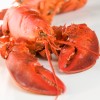
NOAA, FDA Ramp Up Efforts to Ensure Safety of Gulf of Mexico Seafood
The National Oceanic and Atmospheric Administration (NOAA) and the U.S. Food and Drug Administration (FDA) are taking additional steps to enhance inspection measures designed to ensure that seafood from the Gulf of Mexico reaching America’s tables is safe to eat.
The federal government, led by FDA and NOAA, is taking a multi-pronged approach to ensure that seafood from Gulf of Mexico waters is not contaminated by oil. The strategy includes precautionary closures, increased seafood testing inspections and a re-opening protocol.
“Closing harvest waters that could be exposed to oil protects the public from potentially contaminated seafood because it keeps the product from entering the food supply,” said Dr. Jane Lubchenco, undersecretary of commerce for oceans and atmosphere and NOAA administrator. “Combining the expertise of NOAA and FDA is the best way to use our scientific abilities to help the American people in this emergency.”
The first line of defense is NOAA’s fishery area closures, which began May 2 and are adjusted as the spill trajectory changes. The current federal closure of 32 percent of federal waters encompasses areas known to be affected by oil, either on the surface or below the surface, as well as areas projected to be affected by oil in the next 48 to 72 hours. The closed area also includes a five-nautical-mile buffer as a precaution around the known location of oil.
To help prevent tainted seafood from reaching the market, NOAA created a seafood sampling and inspection plan. Just after the beginning of the spill, it collected and tested seafood of commercial and recreational fish and shellfish species from areas where oil from the spill had not yet reached. NOAA is using ongoing surveillance to evaluate new seafood samples to determine whether contamination is present outside the closed area. If fish samples have elevated levels of oil compounds, NOAA will consider whether to expand closed areas.
The federal effort to ensure seafood is not contaminated with oil will also include NOAA’s dockside sampling of fish products in the Gulf. NOAA will verify that catch was caught outside the closed area using information from vessel monitoring systems that track the location of a vessel or information from on-board observers. If tainted fish are found in dockside sampling, NOAA will notify FDA and state health officials for further action.
FDA will first target oysters, crab, and shrimp, which due to their biology retain contaminants for longer periods of time, for additional sampling. The sample collection will target primarily seafood processors who buy seafood directly from the harvester. Monitoring this first step in the distribution chain will help to keep any potentially contaminated seafood from consumers.
FDA has also created a focused inspection assignment designed to help seafood processors review their individual source controls to ensure proper documentation and exclusion of any seafood obtained from unknown sources from entering commerce.
The two agencies are also establishing a re-opening protocol. NOAA will reopen closed areas only if it is assured, based on consultation with FDA, that fish products within the closed area meet FDA standards for public health and wholesomeness.